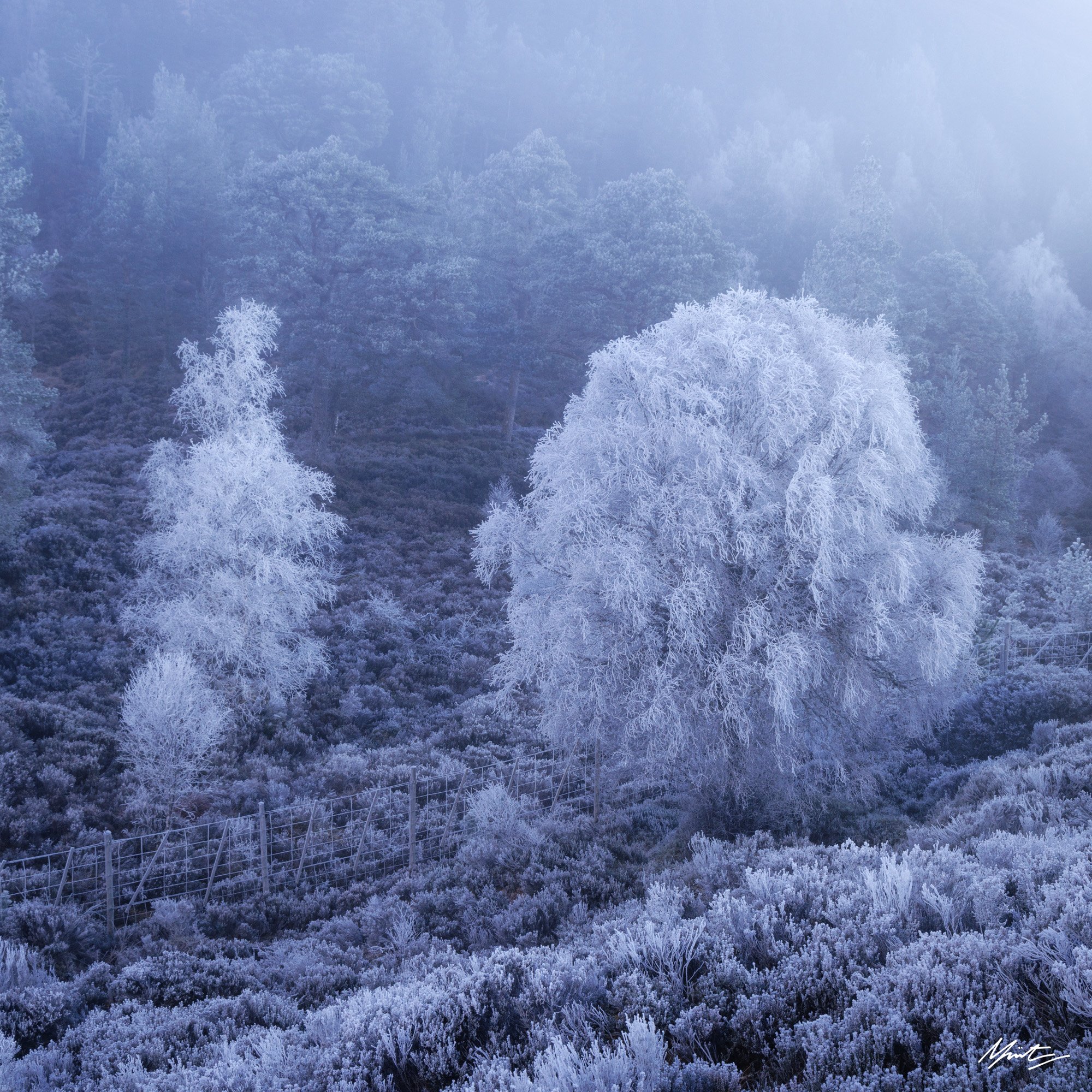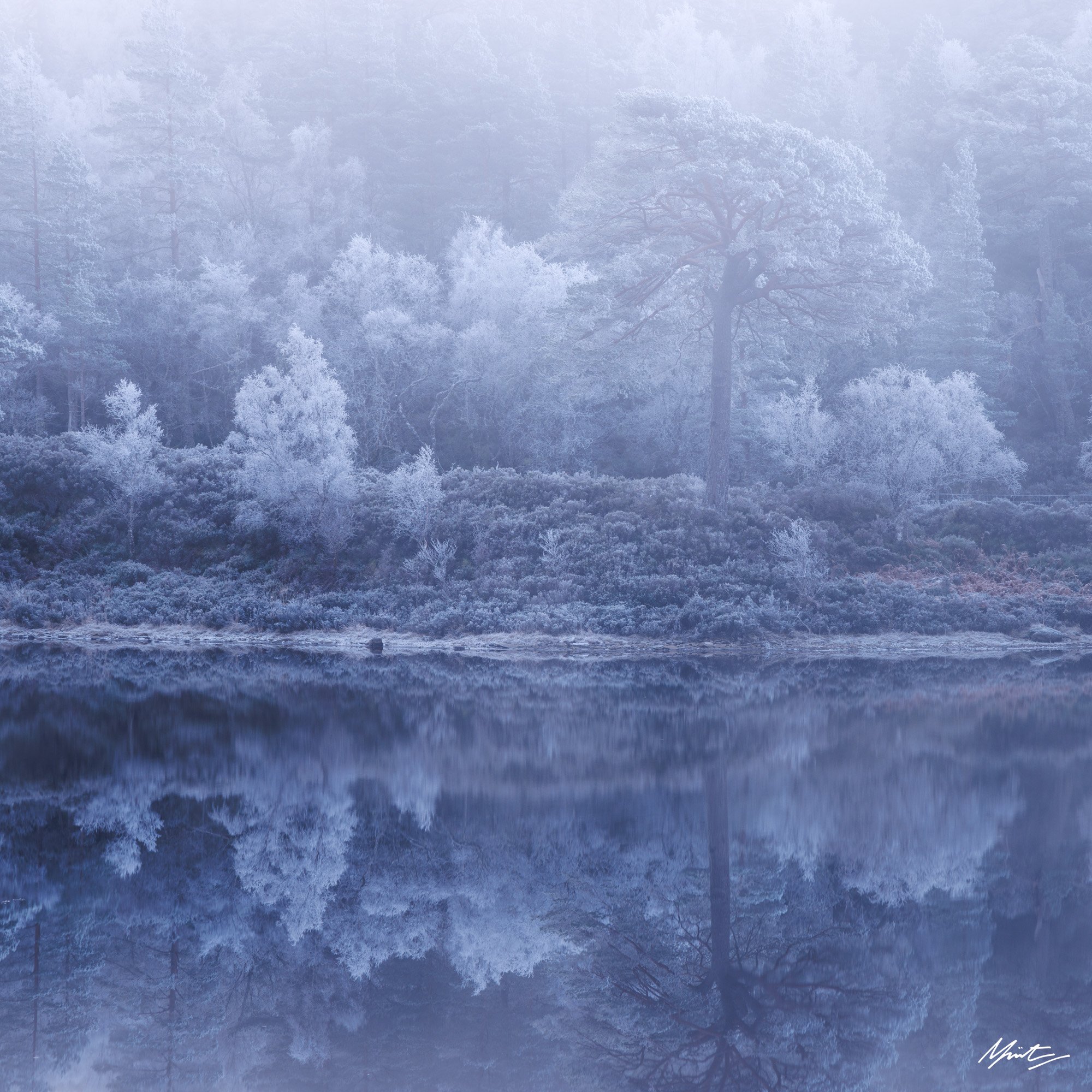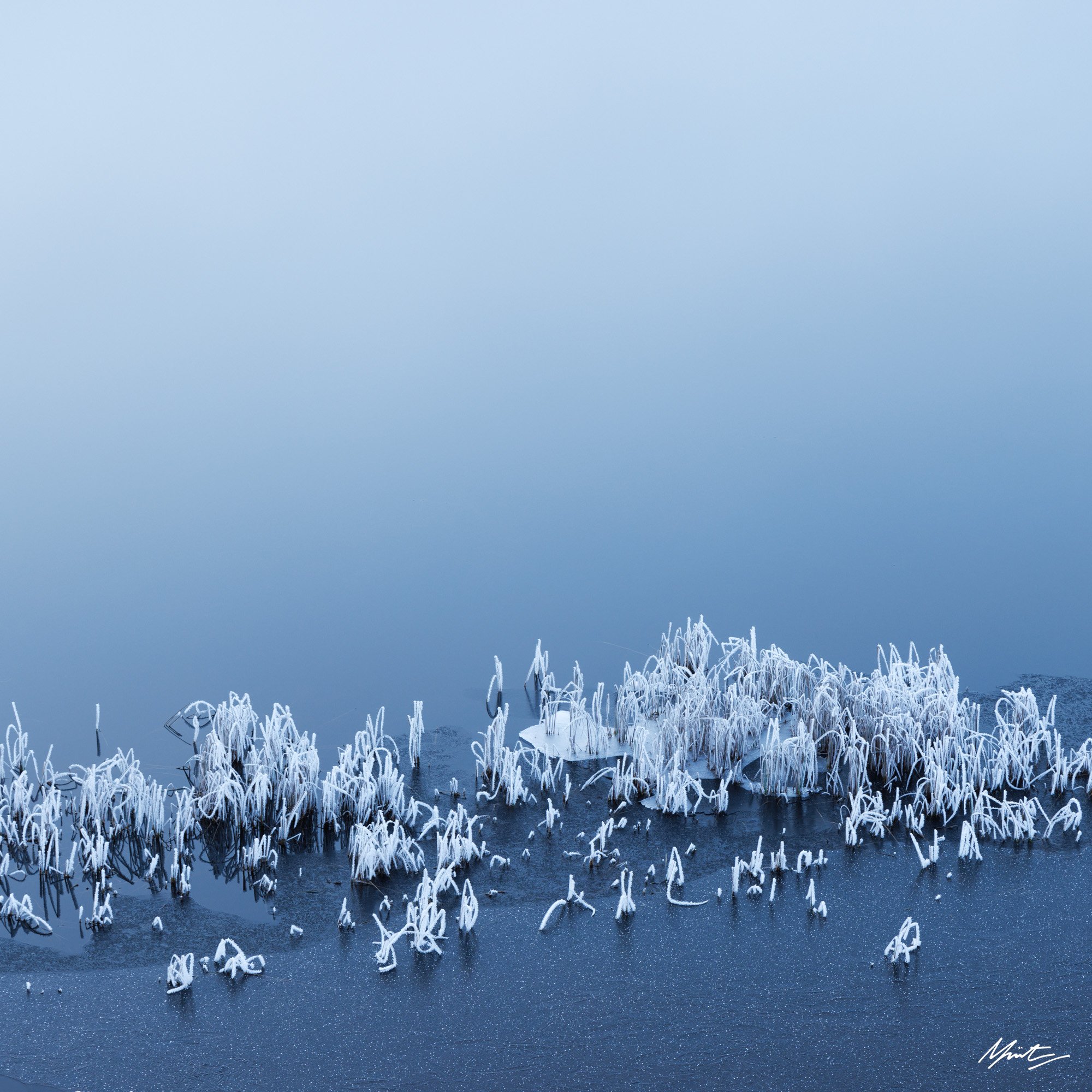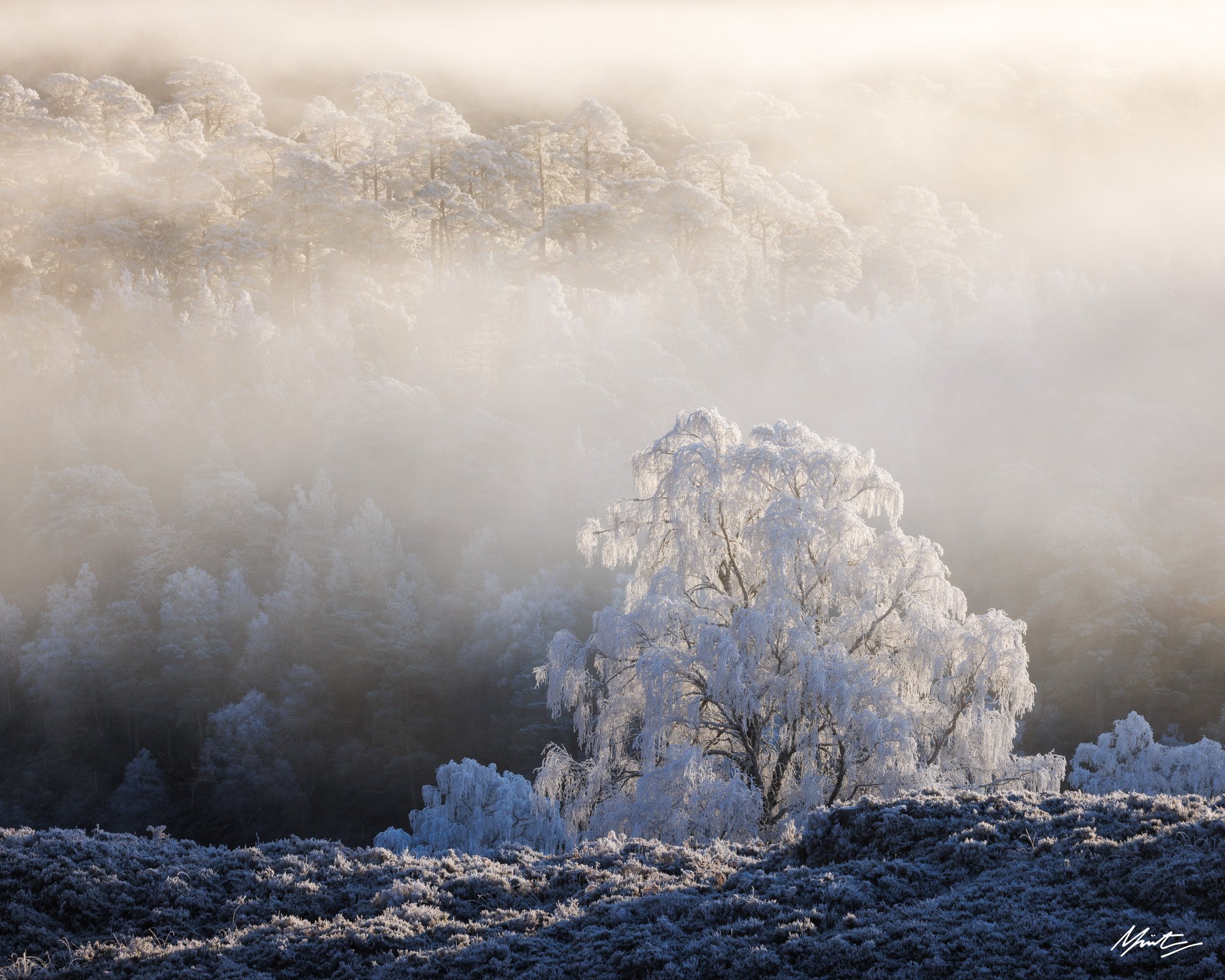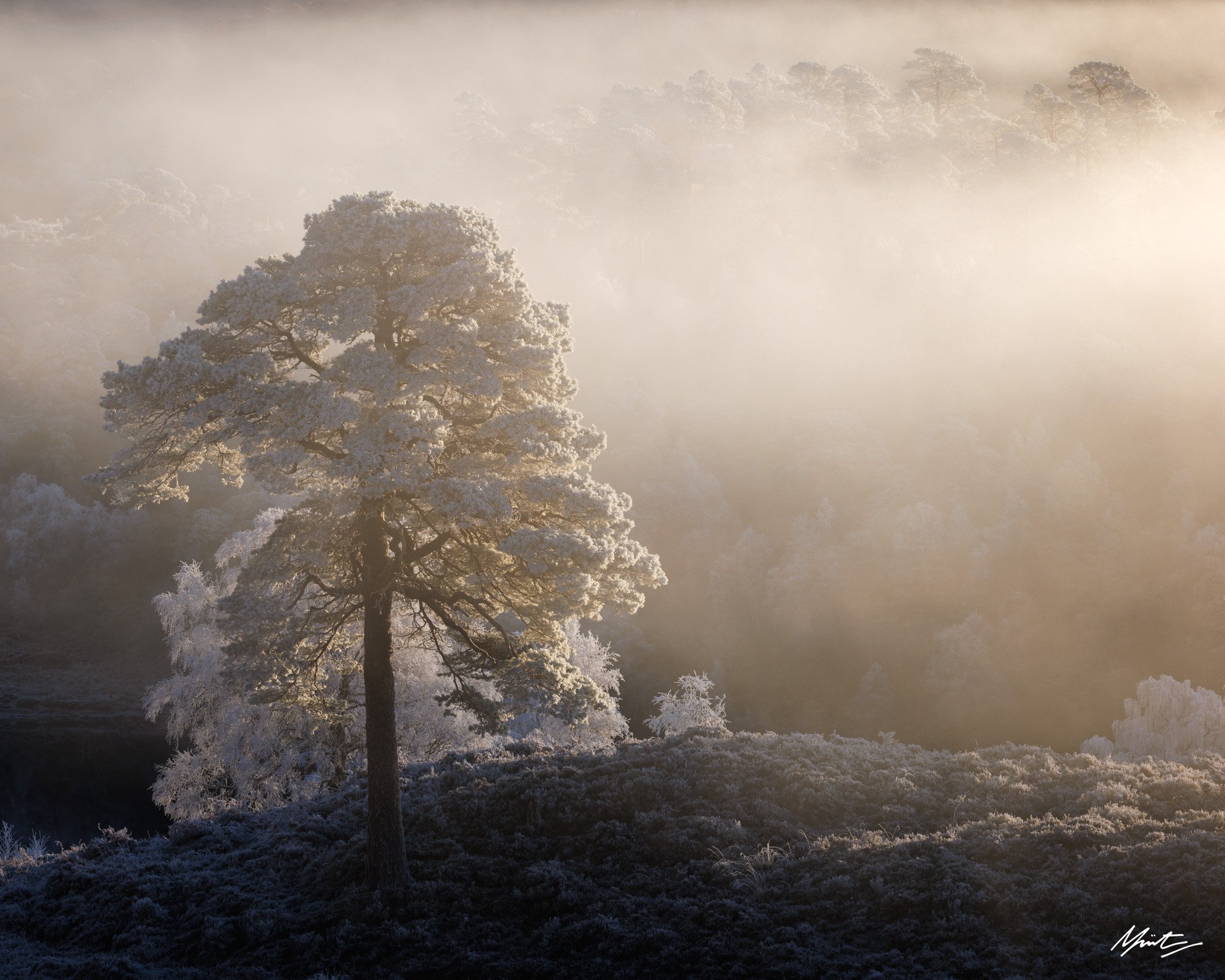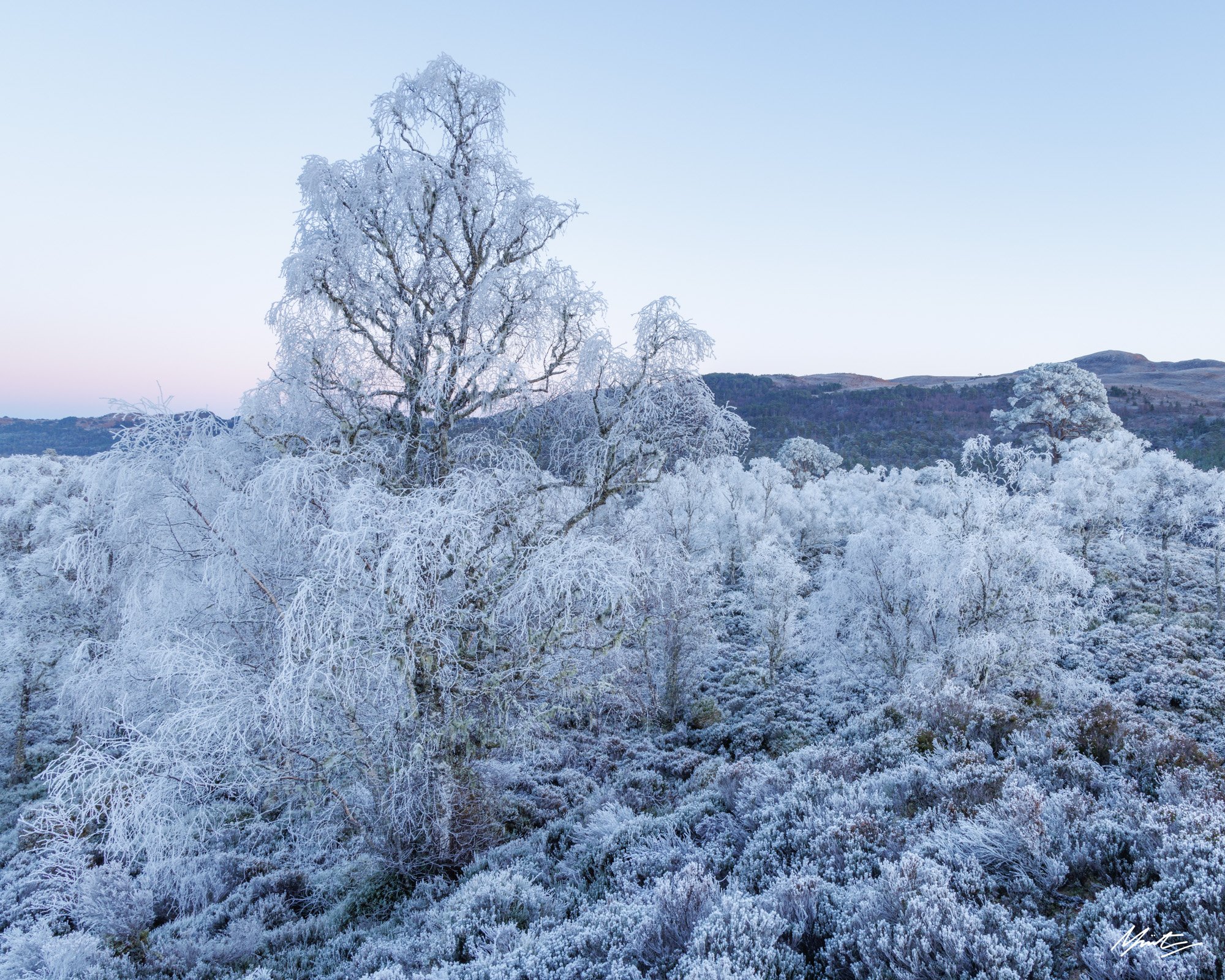Photographing Hoar Frost in Scotland’s Ancient Caledonian Scots Pine Forest // A Morning To Remember
Prints of all the images in this blog post are available to purchase here. Alternatively, if you find value in my writing, images, or just want to support my photography then please consider making a small donation below. Thank you.
Some stories start at the end.
My annual winter trip to Scotland culminated with what may be my favourite 10 hours of photography I’ve ever experienced: a full day of wintery goodness in an Ancient Caledonian Pine Forest. It was calm and clear skies overnight with a gentle northerly rolling -9C freezing fog through the glen. Birches slowly accumulated a thick layer of hoar frost, as if sketched and outlined with a pencil; even the Scots Pine’s much darker foliage was covered in ice, something I had never seen before, but had always dreamed of photographing. The forest glistened in its perfect frozen white veil.
I met up with a fellow landscape photographer (who requested to stay unnamed) at the far end of the glen. This was to become a theme of my trip, as I try to incorporate more collaboration into my creative workflow - I have found surrounding myself with like-minded photographers to encourage both productivity and creativity. It was just before 7am, pitch black, almost a full two hours before sunrise, and longer still before light would breach the glen’s ridge to the south. He joined me in the campervan for a cup of coffee to say good morning and come up with a game plan for the day. I turned the lights on, got the kettle out, and looked over to my tap only to realise there was a six inch stalactite dripping from its end! My friend had fortunately brought a thermos with, so we were able to enjoy a hot drink and some caffeine before heading out. While it was my fourth visit, he has been photographing this glen for over 10 years and has an extensive knowledge of every nook and cranny. I think our combination of experience and relative naïvety (predominantly on my part!) set us up for success, something that might not have happened if either of us were out on our own.
We set off up a small hill near the car park, following the light of our headlamps illuminating our breath, through some birch woodland to gain a vantage point and assess the height and location of the fog. I quickly clued in that the northern aspect of the trees seemed to be more frosty, and so making images facing more or less south across the glen would be my game plan for the day (something that would pay off later on). The mist seemed to be mostly hugging the far south side of the glen, ideal as a backdrop, and hovered at the altitude we had climbed to. Any lower and we would risk being engulfed, any higher and we would be above the clouds. I noticed a pair of birches softly illuminated by the moon, slowly breaking through the clouds overhead. Closer inspection on the back of the camera revealed a deer fence running through the composition (it was very dark to the naked eye); man-made objects are something I don’t normally photograph but in the case of this particular glen’s connection to re-wilding and forest restoration, it seemed fitting and told a story.
Descending from our hill top perch, we decided to wander up the riverside to explore some of the lower northern slopes of the glen. It was a section of road walking (private and not accessible by car), but both of us couldn’t make it ten meters without stopping to break out the camera. The ice encrusted birch and pines reflecting in the river with a slow layer of fog rolling in and out were calling to us. Indeed, they were scenes that one might typically walk passed, brought to life by spectacular wintery conditions. Having already been in the glen myself for two days prior to meeting up with my friend, I had only come away with two worthwhile images (below). The temperature had been hovering around zero with some light frost and golden light: beautiful to the eye, but not fully capturing my imagination. However, it is all those days out in preparation, the days out in testing or banal weather, the days out just simply to practice, the revisiting of a location again and again, that allows the artist to achieve a flow state when it really matters.
It was utterly freezing, but neither of us really minded the cold that morning. Numb fingers were a price worth paying for what we were witnessing. As daylight began to break, the colour of the woodland subtly shifted hues, from the deep blue of pre-dawn, to a gentle pink just before sunrise, and finally a cool white before light finally illuminated the valley. There was never a sense of urgency or a need to rush that morning. I had settled into a rhythm of noticing details, flowing from one photograph to the next, excited by anything that caught my eye. In fact, it is only upon revisiting the images that each scene stands as an individual memory; without them, the morning is a single continuous moment, floating down the river amongst the trees.
Looking up at the hills around us, first light was touching the peaks. It was time to move up onto the hillside to see what would happen when light illuminated the frost. A short walk to the tree line (the tree line is often very low in Scotland’s hills due to grazing pressures and a “compressed altitude” phenomenon) revealed a number of lone specimens set away from the main forest. The fog was slowly breaking up, revealing details across the valley. And finally, light. Perfect warm light.
The woodland transformed from a frozen tundra to a glowing alchemy of trees. I had never seen hoar frost backlit like that and I was utterly transfixed. It was a transcendent, ephemeral experience truly hard to put into words. I slowly pieced together a series of images, trying to capture a variety of compositions with foregrounds, pairings and relationships, lone trees, and abstracts/intimates, slightly worried that the frost might melt in the sunshine. To my surprise, the woodland remained frosty the entire day (and from other friend’s accounts, into the following day as well).
The cold finally got to me (my knee bursitis was screaming for a rest). I headed back to the van to defrost and get the coffee on for both of us. After a quick bite to eat, we decided to head back down the glen to see what the more dense birch woodlands looked like in shade. Driving through the middle section of the glen there was hardly a speck of frost which got us worried we had left the best of the conditions behind, however upon turning out of the sunlight we quickly realised we had made the right decision. The birch were covered wonderfully in more frost and once again we were stopping every 10 meters to make photographs. The day eventually drew to a close with the Belt of Venus slowly appearing in the eastern skies to mark the end of what had been an exceptional day. It was the perfect way to finish my annual winter trip.
A big shout out to my friend for joining me in this experience of what could be once-in-a-lifetime conditions (he has never seen the glen like this in all the years he has visited) and for his kindness and generosity in sharing his knowledge of what has become one of my own favourite areas of Scotland. It was truly fortunate that we planned to meet up on that particular day!
Thank you for reading! A short film from the day will be coming in the near future on my YouTube Channel. When it is live I will update this page with a link!
